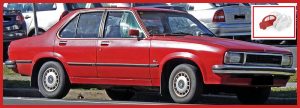DABAS blog: C19 Lockdown restrictions reading article 2020– Hello readers, hoping you, your families – and all – are well during these Covid19 restricted times. In this DABAS blog post due to the current lockdown, let us take a step back from looking at a new model MY20 vehicle: with – l hope- an interesting distraction: an historical look back at one of Australia’s favourite car makers, Holden. Back on February the 17th of this year it was incredibly sad news to hear that the Holden-badged car is – by year’s end – to be no more, with the head office of General Motors announcing it will ‘retire’ the brand after deciding to withdraw from all right-hand-drive markets around the world, including Australia. Holden dominated the Australian car market for much of the last half-century and shaped the nation’s culture along the way, accounting for up to half of all new vehicles sold in the late 1950s, while remaining at or near the top of the charts through to 2002, its last year as the nation’s favourite car brand. The Holden car has held a crucial role in my own and the lives of many Australians throughout its 160-plus year history.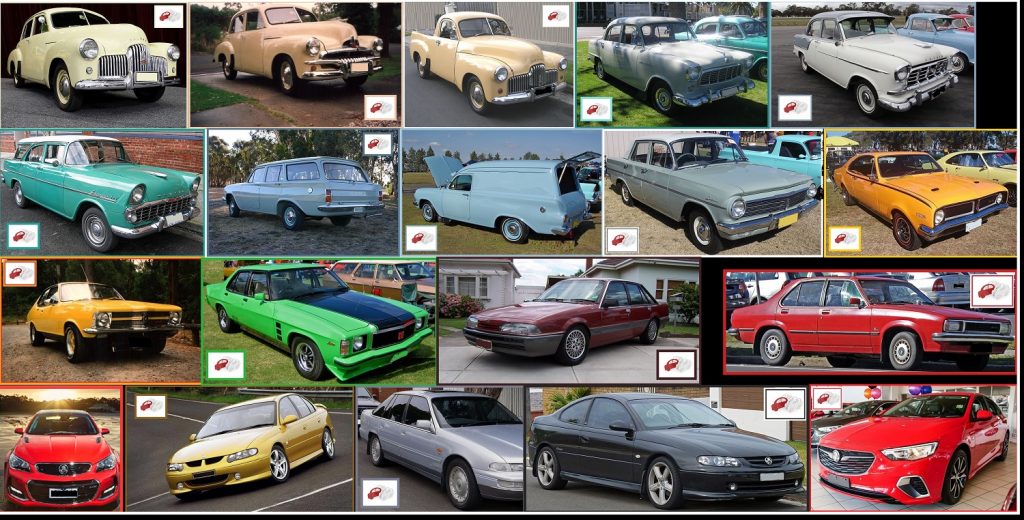
Like myself, a Holden enthusiast, l know there will be many of you with fond memories of the Holden 48-215 (FX), the FJ Holden, and the many various Holden models we owned that followed, including the iconic Torana GTR XU1, A9X hatchbacks, SLR5000 sedans and HDT Commodores that graced our garages. Now with that sad news of Holden’s “retirement” by the end of 2020 – just 18 years since it was Australia’s most popular brand – let us take some time to look back at the major timeline milestones that ingrained the brand so deeply into the local consciousness. Before we start, keep in mind that when looking at buying a brand-new MY19 or MY20 vehicle, as with any big decision, it’s best to do research before stepping a toe into an LMCT dealership; DABAS can assist by doing this for you, looking at factors such as fuel economy, safety, technology, servicing schedules and costs, plus added extras that may all help in your final purchase decision, as each vehicle’s variant in the model range is usually available with progressing arrays of added inclusions that may suit your personal needs to a tee. Comparing new cars solo by yourself can be very time-consuming, and at times confusing, but with DABAS’s assistance the modest service fee charged for our assistance will have been well worth it when you get behind the wheel of your ideal dream car, knowing the vehicle suits your lifestyle and hip pocket, both now and in the long run!
If you would like DABAS’s assistance buying a vehicle, please click here.
Here we go,
A brief history timeline of Holden – from the beginning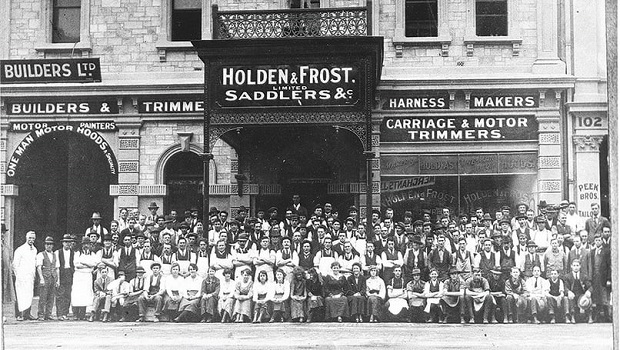
To begin with in 1856: James Alexander Holden arrived in Adelaide from England, within two years (at just 19 years of age) he co-founded saddlery business Holden and Frost in Adelaide.
In 1896: Holden and Frost scored a major government contract to supply harnesses and saddles to the Imperial Forces engaged in the Boer War in South Africa.
In 1902: General Motors began selling cars in Australia, after setting up an Oldsmobile dealer north-west of Adelaide – which even continues to sell Holdens to this day, (as at March 2020).
In 1908: Holden and Frost moved into the automotive world, making side-curtains for some of the first cars on Australian roads. Holden expands its business to include vehicle upholstery; upholstery repairs were also a speciality.
In 1913: By this time Holden was making complete metal sidecar bodies for motorcycles.
In 1914: Holden makes its first car body using horse-carriage building techniques.
In 1917: War restrictions forced manufacturers to start making car bodies to be fitted to imported chassis. Holden became a large-scale operation in this field.
In 1918: Holden builds 587 car bodies (but not the engine, chassis, steering or suspension) as the automobile starts to overtake the horse and cart.
In 1924: The US giant General Motors first became involved with Holden in 1924. At the time Holden was a motor body builder, fitting its designs to other car brand’s chassis. In 1924 General Motors signs a contract with Holden to manufacture local bodies exclusively for them.
In 1928: Holden’s famous “lion and stone” logo is created.
In 1931: General Motors increased its stake in Australia, merging with Holden Motor Bodies to create the company known as General Motors Holden (GMH). General Motors had recognised the success of the body-building operation and bought it outright. As well as a ready-made production facility, it gave GM more control over its business. General Motors Holden Limited was born.
In 1934: Laurence Hartnett became GM-H managing director. A war hero (and later Sir Laurence), Hartnett spends the next war organising manufacturing across the Allied world, making several risky flights over occupied territory.
In 1936: GM bought a huge patch of reclaimed river silt in Port Melbourne’s Fishermans Bend which is just near the CBD of Melbourne. GMH built the Art Deco buildings that have been Holden’s headquarters ever since. Assembly of Chevrolets and Vauxhalls for local consumption was the main operation. Holden assembles cars in this facility using foreign US parts. General Motors executives start to plan a uniquely Australian car. GMH had also begun planning full-scale local production of motor vehicles.
In 1939: The advent of World War II delayed those ambitions as the company began shifting its manufacturing expertise to support the military among the Allied nations with the factory supporting the war effort. GM-H was a major supplier of war machines to the Allies including guns, tanks and even aircraft. In fact, Australia built whole aircraft long before it built its first car.
In 1945: Hartnett sat down with Prime Minister Scullin to float the idea of Australia making whole cars from scratch. The idea was born. And was a grand one: to build jobs and the nation itself. Eventually, an agreement was arrived at: GM will provide the know-how and engineering, but the Australian government must take the financial risk.
In 1946: After the war GMH was left with the ability to make engines, chassis and vehicle bodies in-house and in 1946 the company began work on what would become the first Holden car.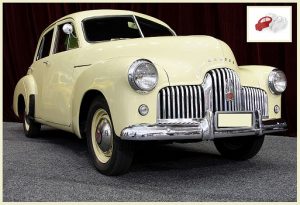
In 1947: The first Holden car known as the 48-215 was a scaled-down version of a General Motors Chevrolet design that had been discarded in the US. After rigorous testing for Australian conditions in 1947 it was ready for production by the end of 1948.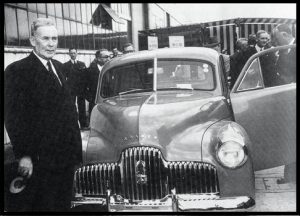
In 1948: The year the first Holden-badged car rolled off the production line. In November 1948, the Prime Minister, Ben Chifley, welcomed the very first home-grown Holden known as the 48-215 (or the FX Holden). Prime Minister Chifley unveiled the first production Holden, the 48-215, at Fishermans Bend, declaring, “She’s a beauty”. Notably absent was Laurence Hartnett who had been effectively sacked by General Motors in December 1946, although he is still regarded as the father of the Australian car industry.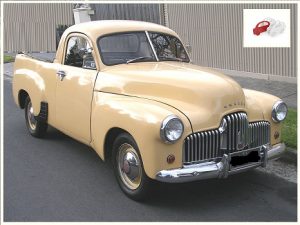
In 1951: The utility version of the Holden was launched and while the official name was still 48-215, Australians knew the model simply as the FX Holden.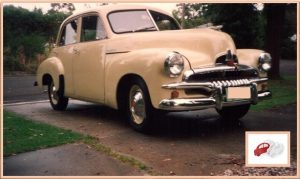
In 1953: The FJ Holden goes on sale, priced from about $2046 new. This was the first update of the 48-215 (FX) Holden and was officially named the FJ. A bit more chrome, the same mechanicals and the option of a panel-van kept the Holden showrooms full. The only problem for Holden was keeping up with customer orders. The brand snatched market leadership the same year. In 1954: Every one of three cars on the road is a Holden.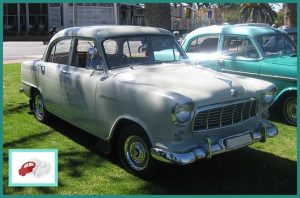
In 1956: The first all-new model Holden arrived. Dubbed the FE, it was a more modern look. Like previous models, it was a bit like a three-quarter-scale US-market Chevrolet to look at and, also like the previous FJ, it was available in Standard or Special (= fancier) trim.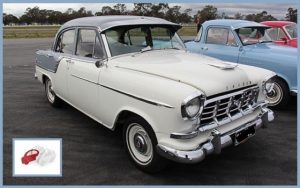
In 1958: Body assembly division at Elizabeth, South Australia, begins. The FE was replaced by the FC in 1958. This same year, Holden reached the 100,000 units per year milestone. By now, every second car sold in Australia was a Holden.
In 1960: Although based on the same floorpan as the FE and FC, the new FB was a bigger, brasher vehicle in every regard. Mechanically, though, Holden was in neutral. The first Holden left-hand-drive export began when the FB model was sent to Hawaii.
In 1961: Styling upgrades are coming thick and fast in the 60s, and less than 18 months after the FB, the EK arrives in 1961. You needed sharp eyes to spot the differences – as they looked remarkably similar.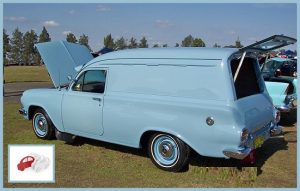
In 1962: The EJ Holden was a major departure from previous Holdens. It was lower, sleeker and better equipped, including ushering in the option of the flagship Premier trim level. Why? Because Ford was now building the thoroughly modern Falcon locally, and competition was fierce. The one-millionth Holden is made since 1948; it was an EJ model.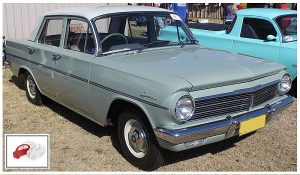
In 1963: The iconic Holden EH goes into production: 256,959 are built in less than two years. It is the biggest selling Holden so far at the time and one of the best loved Holdens of all time. The EH remains a sweetheart to many of us, (maybe? as a lot of mid-1960s to 1980s youths in Australia learned to drive in one or had one as a first car). The EH also introduced the new “red motor” six-cylinder throughout the range and performance was through the roof. The EH also spawned the S4; Holden’s first attempt at a motor-racing homologation model.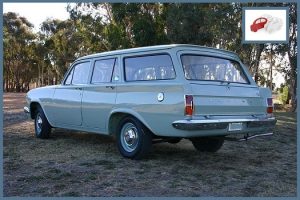
In 1964: The number of workers Holden employed across seven manufacturing facilities – Queensland, NSW, Victoria, and South Australia – in 1964 was 23,914 workers. Holden began assembling the Vauxhall Viva as its small-car offering. (By 1968, the car was being completely manufactured in Australia and badged the HB Torana).
In 1965: Following one of Holden’s best cars (the EH), was – to some – one of its worst. The HD looked new but was the same old gal underneath. The body was stretched and widened, making for all sorts of complex metal folds and box-sections that trapped moisture and allowed rust to form before the warranty period was up. The Holden factory in Elizabeth (South Australia) also begins full vehicle assembly in 1965.
In 1966: Holden moved quickly to fix the problems of the HD and, in the process, produced another huge crowd-pleaser. The HR was regarded as almost as loveable as the EH.
In 1968: The Holden Kingswood goes on sale, popularised with the introduction of the Monaro. The HK Holden saw the end of the old Standard and Special model variants and ushered in the Belmont and Kingswood tags. The Premier remained as the flagship variant. The HK also gave us the Brougham – a stretched Premier with more boot but no extra legroom – as a response to the Ford Fairlane luxury car. The other big news in 1968 was the Monaro, a swoopy, coupe version of the HK Holden. The HK was also the first Holden with a V8 option, in this case a pair of imported Chevrolet V8s.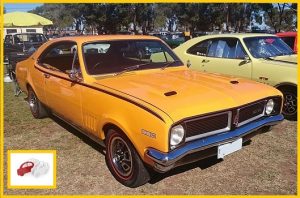
In 1969: The first facelift of the HK was the HT in 1969. It was a cleaner look but, crucially, the first Australian-made V8, the locally designed 253 and 308 cubic-inch (4.2 and 5.0 litre) V8s were now online. The Monaro won the 1969 Bathurst classic in HT form. The final upgrade of the HK platform was the HG in 1970. The Holden big-car line-up at this time included 13 distinct models including utes, wagons, panel-vans, coupes, and the Brougham. In 1969, Holden tops two million vehicles made since 1948. Also, in 1969: The bigger LC Torana arrived, and with it came enough re-engineering for it to swallow the six-cylinder engine from the Kingswood, creating an instant hot-rod. The ultimate expression of this was the Torana GTR-XU1 variant.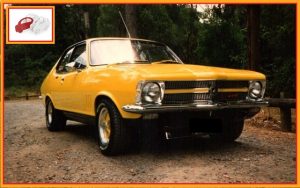
In 1970: This was the year Holden cracked the magic 200,000 cars built in a calendar year. Holden eclipsed 200,000 sales for the first time in a calendar year, a figure only Toyota has beaten to date in Australian automotive history.
In 1971: The HQ Kingswood goes on sale. An epic 485,650 were built from 1971 to 1974, making it the biggest-selling Holden model. The HQ would go on to become Holden’s best-selling model ever. In just over three years, it sold almost a half-a-million units. A more modern look with plusher ride, the HQ was still a conservatively engineered car. But we loved it. The Monaro continued, but the luxury model was the Statesman with a proper long wheelbase. A one-tonne tray-back utility was a new addition to showrooms. The three-millionth Holden was a HQ.
In 1972: The Holden Torana, in LJ GTR XU1 form, won Bathurst in 1972 with none other than first-time winner Peter Brock at the wheel.
In 1974: Holden builds its three-millionth car since 1948, a HQ Kingswood. Its update also in 1974 was a much squarer-look car called the HJ Holden; it was, to many eyes, a backward step stylistically from the svelte HQ.
In 1975: Based on GM’s global small-car, the Opel Kadett, the Holden Gemini of 1975 filled the space vacated by the ever-bigger Torana. Built at Holden’s Brisbane plant, there was a sedan, a questionable two-door station-wagon and good-looking two-door coupe.
In 1976: Things got worse in the HX model of 1976 with ADR 27A, a new anti-pollution law regime that required changes to engines. And while some makers got it right, Holden rolled the arm and delivered a model with less performance and higher fuel consumption than the previous model. This year also saw the grown-up Torana, the LH, arrive with a choice of four-, six- and eight-cylinder engines. The SLR/5000 and gorgeous Hatchback (of the updated LX) were the highlights.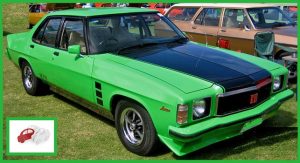
In 1977: Criticism of the Holden’s poor road handling was finally addressed with the HZ Kingswood and its Radial Tuned Suspension; it altered suspension geometry to good effect. The HZ, the last of the Kingwoods, had no two-door Monaro model, but a GTS-badged four-door took its place. Sort of.
In 1978: Holden celebrates 25th consecutive year of market leadership as it introduces the Commodore nameplate to Australia as a replacement for the iconic Kingswood. General Motors switched to this smaller sedan after two “oil crises” in the 1970s. The Australian Commodore is an adaptation of a General Motors Opel sedan from Germany. Holden turned to local manufacturing of this European Opel design as its next family car and with local engineering input it soon established itself with far superior dynamics to any Holden before it. The first model, the VB, was the beginning of a hugely successful dynasty.
The last Torana, the UC of 1978, was watered-down and now all but forgotten.
In 1980: Holden had by now successfully turned to the Commodore as its family wheels, but the previous Kingswood platform continued as the WB to form the basis of the ute, panel-van, and Statesman models. After the WB, Holden would not have a utility until 1990.
In 1981: The VC Commodore arrived and was notable for being the first model to be treated to the Brock magic and emerged as the first HDT Commodore. The four-millionth Holden is made since 1948, a VC Commodore.
In 1982: The VH Commodore arrived (pssst–it had the last of the chromed steel bumper bars fitted on a Commodore). Also, in 1982: Another of GM’s world cars formed the basis of the Holden Camira, which still rates as one of Holden’s biggest missteps. Lacking power, tinny and known to rust within the warranty period, the Camira soon became an MCG carpark joke. 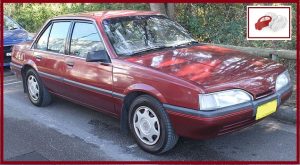
Various Camira facelifts came and went, but the Camira was a dud from day one and was quietly and mercifully discontinued in 1989, long after its welcome had well and truly worn off.
In 1984: The VK Commodore followed the VH in 1984 and as well as some successful styling changes, the model was notable as the last Holden to use the locally made six-cylinder engines, including one version with electronic fuel-injection.
In 1985: The Holden Gemini’s production lasted until 1985, by which time the rear-drive platform was seriously outgunned by more modern designs. Holden switched to the front-drive RB Gemini at that point, but that model was a sales flop.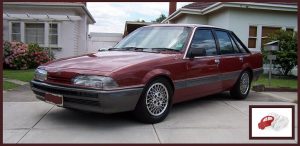
In 1986: Holden does the unthinkable at the time and fits an imported Nissan six-cylinder engine under the bonnet of the VL Commodore. It’s faster and more fuel-efficient than the V8. Holden markets the V8 for “towing” and the six-cylinder for “performance”. Although based on the original Commodore platform, the VL was the result of Holden not being able to squeeze any more life out of its old six-cylinder engines. So, Holden went shopping at Nissan and bought a batch of 3.0-litre sixes. The turbocharged version was a real fire-breather and faster than the V8 models, but as the Australian dollar weakens this Japanese engine becomes too expensive and Holden hatches a plan for a GM-sourced V6 engine for future models.
In 1987: The Federal Government gets serious about the future of the Australian car manufacturing industry’s viability. It worked out that each separate model needed to be built in volumes of 40,000 or more a year to make sense, so the push was on for carmakers to jump into bed with each other and share development costs. It didn’t quite work out that way, and after Holden *first tried a deal with Nissan, (In *1989 it then bed-hopped into a deal with Toyota). At least the Holden-badged Nissan (the Holden Astra) used a Holden engine – eventually.
Also, in 1987, Peter Brock unveils a device called an “Energy Polarizer” and fits it to his latest series of HDT performance road cars. But Holden can’t verify Brock’s claims or find any benefit despite numerous engineering tests. Holden parts company with the racing legend. In 1988: Reacting to long-term criticism that the Commodore is too small for Aussie families, Holden went back to a full-sized car for the VN Commodore of 1988. It used a thrashy but spirited V6 engine (a Holden first), and before long there was a fuel-injected version of the old 5.0-litre V8. The SS badge was revived for the sporty V8 model.
In 1989: Holden changes its model-sharing deal with Nissan to a partnership with Toyota. Under the Federal Government’s continuing consolidation plan, Toyota gets a version of the Commodore V6 (called the Lexcen), while in return Holden gets two four-cylinder cars: a version of the locally made Camry, re-named the Holden Apollo, and a version of the locally made Toyota Corolla, called the Holden Nova. While this Toyota deal was just a simple rebadging job, ironically, the most reliable Holden ever made (the Apollo) is a Toyota. At least they were built in Australia; the Holden Apollo was a Camry with different badges.
In 1990: The five-millionth Holden is made since 1948, a VN Calais. This tally is more than twice as many as any other Australian-made cars at the time. The Holden ute returned as the VG Commodore model, along with long-wheelbase VN variants including a Statesman, Caprice and station-wagon. The VG Commodore utility was the first ute since the WB of 1980.
In 1991: The VP Commodore arrives; it was a mild facelift of the VN.
In 1993: The VR Commodore arrives. Although retaining the VP’s undercarriage, the VR Commodore was a big step up. It introduced many Aussie Holden buyers to the airbag and a model called the Acclaim, which had a driver’s airbag, ABS brakes and independent rear suspension, and was proof that safety was being taken seriously.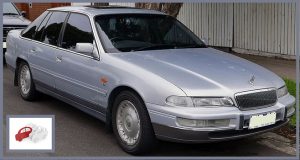
In 1995: The VS Commodore arrives; this model was more of the same tweaked VR and still sold well.
In 1996: The model sharing partnership between Holden and Toyota ends after slow sales and rising tension on both sides. The Commodore starts its 15-year run as Australia’s favourite car.
In 1997: Holden releases the new generation VT Commodore. The VT was bigger, heavier, and better in every way over the previous models. Smart styling, independent rear suspension across the board (even the wagon) and the same ruggedness that made a Holden a Holden ensured that the VT Commodore was the best-selling Commodore ever, with almost 304,000 sold. It would go on to become one of the biggest selling Holdens of all time.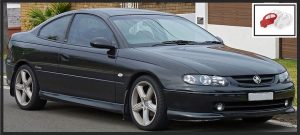
In 1998: Holden stuns the industry when it unveils a secretly designed sleek two-door Commodore concept car at the Sydney motor show. Originally designed by design workmates to take attention away from the new Ford Falcon, the public and the media instantly label it the modern Monaro. Holden, which – at the time – had no intention of producing the car, starts crunching numbers to see if it can make a business case. Also, in 1998: Having imported the European Vectra mid-sizer for a year or so, sales were strong enough to convince Holden to produce the car locally.
In 2000: The VX Commodore arrives; Holden would go on to build 207,339 VX Commodore models (from 2000 to 2002). The VX of 2000 was a mild facelift but didn’t bring ABS brakes to the entire line-up.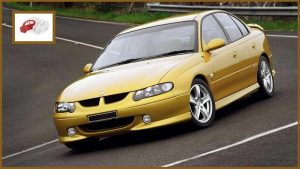
In 2001: The six-millionth Holden is made since 1948, a VX Commodore SS. In December 2001, the Holden Monaro goes on sale. Executives in Detroit are so impressed with the car, they plan to export left-hand-drive versions to the US as a Pontiac GTO.
In 2002: The last time Holden was the top-selling brand in Australia, with 21.6 per cent share of the entire market.
Also, what started as that top-secret, after-hours project between workers within the Holden design team and became the star of the Sydney Motor Show in 1998 entered production (in December 2001) as the reborn Monaro. Based initially on the VX, the Monaro looked fantastic, was affordable and – like the VT and VX sedans – was a viable export product.
In 2003: The Vectra’s local manufacture only lasted a few years; the Vectra now goes back to be an imported – and obscure – car for 2003. Also, the one-tonne ute made a comeback with the VY (which lasted little over a month before being updated for VYII) and Holden had a crack at a home-brewed SUV called the Adventra – basically a Commodore wagon with an all-wheel-drive platform pinched from Hummer. The Adventra did not make the jump to the next new Commodore model.
In 2004-2005: The VY and VZ Commodores of this era also featured Monaro versions, while the last VZs in 2005 introduces us to the new DOHC V6 engine that would power future generations of Commodores. Holden exports 31,500 Monaros to the US as a Pontiac GTO – more than twice the number of Monaros sold locally over four years.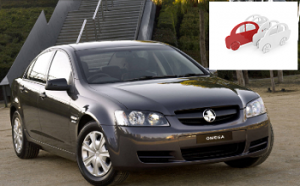
In 2006: Holden launches its “billion-dollar baby”, the VE Commodore sedan and WM Caprice limousine. Unlike every Commodore and Caprice before them, these vehicles are designed and engineered from the ground up in Australia. The underpinnings would also be used for the new Chevrolet Camaro sold in the US but engineered by Holden in Australia. The VE Commodore was a much more stable, dynamic car over the previous model, unfortunately though the VE was let down by reportedly poor interior plastics and iffy build quality. But it sold well despite some engine woes and ongoing electrical problems. Holden’s billion-dollar baby, the VE was easily Australia’s greatest automotive engineering and design achievement.
In 2007-2009: More than 41,000 Commodores are exported to North America as Pontiac sedans between November 2007 and February 2009, almost equivalent to Holden’s annual sales of Commodore at the time – but the deal ends when the Pontiac brand is axed during the Global Financial Crisis. During this period in 2008 the seven-millionth Holden was made since 1948; it was an LPG VEII Commodore. Plans for a right-hand drive Camaro for the Australian market are also scrapped during the Global Financial Crisis.
In 2010: Was the last time the Commodore was Australia’s top selling car. It was number one for a record 15 years in a row. No other car manufacturer’s nameplate has dominated the Australian car market for so long.
In 2011: As with the Vectra, after a year or two of selling the fully imported version of the Cruze, Holden decided to produce it here. So, from 2011, the Holden Cruze goes into production alongside the Commodore snuggly in Holden’s Elizabeth factory. Holden had initially imported the model from South Korea since June 2009. Prime Minister Julia Gillard attends the ceremony and drives the first Australian-made Holden Cruze off the production line.
In 2012: Holden begins exporting the Caprice limousine to the US as a police car.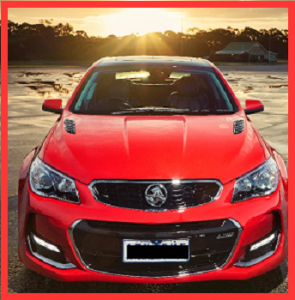
In 2013: The new-generation Holden Commodore VF goes on sale; in the same month Ford announces its factories will shut down in October 2016. The VF Commodore was a facelift of the VE but was much better built and more refined in many aspects; it was also the last of the home-made Holdens. Holden sent it out with a bang with some limited-edition models in sporty trim and colour combinations. The final version of the SS got the 6.2-litre engine HSV had been using and plenty of love from the engineering department, and emerged as one of the best big, rear-drive cars you could buy. October: Holden begins exporting the Holden Commodore SS V8 sports sedan as a Chevrolet SS. It is also the basis for Chevrolet’s Nascar, putting the ‘Commodore’ in front of the biggest sporting audience ever. December: In Federal Parliament, Treasurer Joe Hockey challenges Holden to “come clean” on its future manufacturing plans, with his “either you’re here or you’re not” speech. Days after Hockey’s speech, and one day after a Productivity Commission review, Holden boss Mike Devereux announces Holden will close its manufacturing operations in 2017.
In 2016, 7TH October: The last Holden Cruze rolls off the Elizabeth production line, the same day as Ford closes its manufacturing plants in the Victorian (AU) suburbs of Broadmeadows and Geelong.
In 2016, 29TH November: Holden shuts its Port Melbourne engine plant after 68 years of continuous operation since 1948, and more than 10 million engines produced.
In 2017: With both Toyota and Ford Australia having ceased local manufacturing, Holden had no option but to join them. In March: General Motors sells its loss-making European brands (Opel in Germany and Vauxhall in the UK) to Peugeot-Citroen. The French car giant says it will honour its obligation to supply Holden with the Commodore and Astra. General Motors executives flatly deny rumours there is a secret plan to bundle Holden with the sale of Opel and Vauxhall. The Australian Holden factory lights were turned out for the last time on October the 20th 2017: Holden builds its – and Australia’s – last car, a red Holden Commodore V8 in a private ceremony attended by 1000 factory workers past and present. The number of Holden Commodores built in Australia since 1978 was 2.3 million, that is not including models exported to the US and the Middle East as Chevrolet and Pontiac sedans. The total number of Holdens made in Australia since 1948 to date was 7,687,675.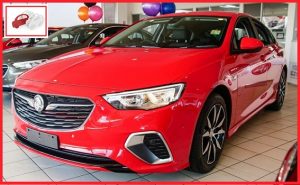
In November 2017: To replace the VF Commodore series, Holden begins importing the new generation Opel Insignia – with a choice of four-cylinder or V6 power – and rebadges it as a ZB Commodore. There is no V8 in Holden showroom for the first time in decades.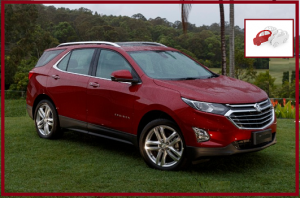
In December 2017: Holden introduces the Equinox SUV an imported five-seater designed to compete with the likes of the Toyota RAV4 and Mazda CX-5. Holden originally forecast sales of 32,000 per year; it reportedly has averaged less than 5000 annually. In October 2018: The new ZB Commodore, a fully imported car (as mentioned above) was officially launched. The ZB Commodore was technically more of a Vectra and even Camira descendant, but it was surprisingly close to the VF Commodore in size. Even before the showroom covers came off, the haters were having a field day, dooming the car. In other ways, the ZB Commodore was a very good car. But when the volume-selling model was a four-cylinder car with front-wheel drive, calling it a Commodore was to a lot of Holden enthusiasts a bridge too far. The ZB Commodore was an instant sales orphan compared to previous Commodore models.
In December 2019: Holden boss Dave Buttner, a former Toyota Australia executive, steps down on 2nd December 2019 after just 16 months in the job. Marketing boss Kristian Aquilina, a 22-year veteran of Holden, is appointed interim chairman and managing director. One week later, Holden announces the Commodore will be dropped from local showrooms and the model will be phased out as dealers clear remaining stock. Holden announced it would drop the ZB Commodore and Astra to concentrate on SUVs and utes. The move took the brand one step closer to oblivion. 
Also, in 2019 Holden introduces the Acadia SUV, a full-sized seven-seater from the US. The cost of the factory conversion to right-hand drive reportedly cost $100 million. Reportedly fewer than 4000 have been sold in Australia since it went on sale here, which equates to more than $25,000 per right-hand drive vehicle on the additional engineering cost alone. The depth of the trouble was reflected in Ford, itself struggling, beating Holden in the sales race for the first time in 21 years. By year’s end, Holden’s market share was just 3.1 per cent, the lowest it had ever been.
In Early January 2020: Official figures for 2019 show Holden posted its lowest annual sales since 1954 after producing six of its lowest monthly results since 1948. The total number of Holdens sold in 2019 was 43,176 units, a far cry from its 2002 peak when the Holden brand sold over 88,000 Commodores alone from a total of 178,000 vehicles.
On 17th February 2020: General Motors announces it is getting out of all right-hand drive markets globally, with Holden dealers due to shut their doors by the end of 2020. On February 17, Holden dropped the bombshell that it was closing the door for good. There would be no more development and test centres, no more dealerships and no more cars with Holden badges. Reportedly no government support, changing consumer tastes, a lack of hybrid or electric models and, ultimately, GM’s decision to abandon right-hand-drive production all helped to seal the Lion’s fate. But it was a heck of a century-and-a-half and gave us more than seven-and-a-half-million reasons to smile: a sad end to a rich history of great motoring memories.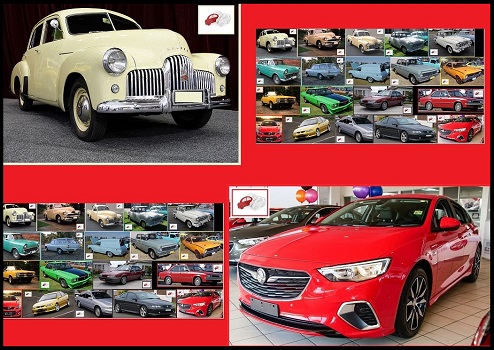
At DABAS we know that buying a car to suit your needs can be one of the biggest purchases in your life. We hope this intended to be “general-in-nature timeline of Holden information” blog page has provided an interesting distraction from the current Covid19 lockdowns and social restrictions. We look forward to having a chat in the future when the need arises for you to update your car; to assess your personal car-safety requirements and buying needs to suit your lifestyle. And importantly your set specified budget!
Whatever roads your life journey takes you on, DABAS can help you find a car to travel those roads.
When it comes time to update your car DABAS is aware of some things to consider within the many featured model range variants, inclusions, plus more of the opposition comparisons, and also things to keep in mind – including when you are trading in your old car at a LMCT used-car yard – and the special trade-in incentives offered on drive-away-no-more-to-pay deals obtainable – at times – within leading brands’ Melbourne LMCT new-car dealerships. These will be discussed upon your transition to becoming a client of DABAS.
To contact DABAS to discuss your car-buying needs; please click here
If you would like to go to the car auctions as an alternative car-buying option; please click here
For “many more” DABAS past blog topics; see our archived index here
Thanks for visiting DABAS’s website and blog.
Have a great day, Cheers, Tim.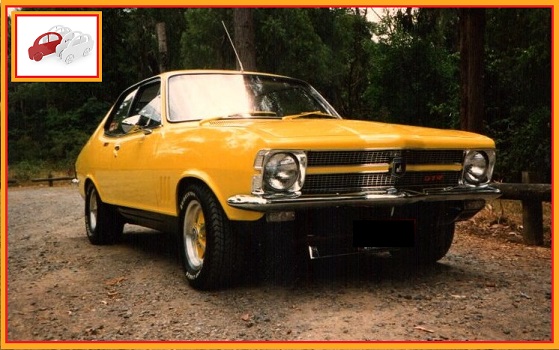
–Please note; information mentioned on this page is to be considered as a general-in-nature summary; all information and advice mentioned may be outdated or superseded by the time of your reading of this page; all information will be confirmed at the time of your transition to becoming a client of DABAS.

